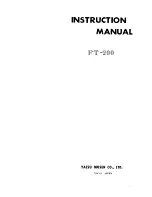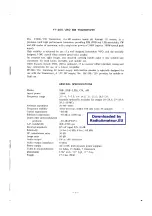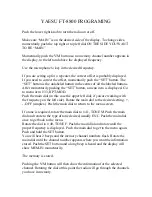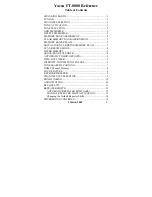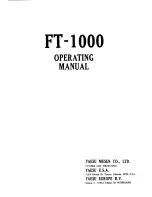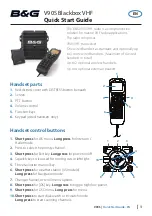
5.5
Monitoring functions
The monitoring functions are used to define various alarms and to set output contacts. Each
individual error can be defined to be effective or not (at the contact or as an error current). An
alarm condition can be defined to activate a cleaning function (F8).
5.5.1
Alarm
Coding
Field
Selection or range
default (bold)
Display
Info
F
Function group
ALARM
Alarm function settings.
F1
Selection of
contact type
Stead
=
steady
contact
Fleet = fleeting
contact
The contact type selected here
only applies to the alarm contact.
F2
Selection of time
unit
min
s
F3
Enter alarm delay
0 min (s)
0 ... 2000 min (s)
Depending on the unit selected
in F2, the alarm delay is entered
in s or min.
F4
Selection of error
current
22 mA
2.4 mA
This selection must be made
even if all errors are suppressed
in F5.
F5
Select error
1
1 ... 255
All errors can be selected for
which an alarm message should
occur. The errors are selected
via the error number. For
individual error numbers, please
refer to the table in Chap. 77. The
factory settings remain in effect
for all errors not edited.
F
ALARM
F1
Cont.Type
Stead
F2
Time Unit
min
F3
Err.Delay
0
s
22mA
F4
Err.Curr
F5
Sel.Error
1
The factory settings are printed in bold; functions printed in
italics are not available in the basic version.
OM253FE5A.CHP
Liquisys M COM 223 F / 253 F
Instrument configuration
Hauser
31
































